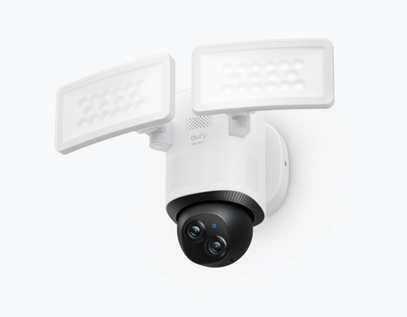Which technologies should you pay attention to? Your fiduciary responsibility, and your opportunity, as a leader is to identify which two or three exponential technologies are potentially the most disruptive for your industry and intercept these exponential change curves to ultimately benefit from this technological disruption and to future-proof your business model for the decade ahead.
5 Disruptive Technologies Your Business Needs Now
1. AI as a Service
Every company must, at the very minimum, develop a strong AI competency in addition to any other exponential technologies relevant for its industry. For example, Peter Diamandis, the founder of the XPRIZE, is disrupting his own business of providing exponential technology education by building an AI that can help him search the web for evidence of abundance and longevity. He has built a machine learning algorithm called Futureloop, which scours thousands of online news sources daily, identifies the most relevant highlights of abundance and then packages it as a daily email for his clients. Now, you don’t need to build your own AI capability like Peter has done; you can borrow or rent this capability using software-as-a-service AI platforms.
Well before 2030, we will see the emergence of powerful cloud tools known as AI as a service (AIaaS) — which will allow every business leader to incorporate AI into different functional domains. AIaaS will collaborate with employees in everyday business operations, including helping with rote tasks, more creative idea generation, accounting and finance, customer service, business intelligence and HR. These AIaaS tools will allow companies of all sizes to rent the world’s most powerful computing tools and apply them to existing data. For example, the new Amazon Personalize machine learning platform enables clients to engage the power of Amazon’s machine learning capabilities to create individualized recommendations for their consumers, using that company’s proprietary data.
AIaaS will be propelled by the increasing ubiquity of cloud computing and software as a service (SaaS). Cisco estimates that 70 percent of all enterprise workflow in 2021 is happening in the cloud, using SaaS enterprise platforms. In fact, what we call AIaas now seems destined to become just a part of standard operating procedure.
More From Built In’s Corporate InnovatorsMy Secret to the Success of Amazon? Being OK with Spectacular Failure.
2. Quantum Computing
The next era of computing will be propelled by quantum computing, which will radically change the nature of a wide range of industries, including finance, materials science, logistics, supply chain, biotechnology and computer network security itself. Right now, some problems we face are too complex to solve or predict because they have seemingly infinite variables. But quantum computers can simultaneously process a vastly larger range of values than even the most powerful of today’s supercomputers. That means quantum computers will be capable of quickly solving many problems that are currently too complex because of their vast numbers of variables. Quantum computing can optimize systems like supply chains and logistics and create breakthroughs in materials design, chemistry, and pharmaceuticals. Quantum computing would likely have arrived at the formula for a coronavirus vaccine even faster than it was developed.

Today’s quantum computers have limited practical applications because they are huge and require precise lab environments to function. In the next five years, however, quantum computing will be available as a cloud service provided by all the competing tech giants — Google, Amazon, Microsoft, IBM and others.
On the Other Hand . . .Is Quantum Tech All Hype?
3. Avatar Systems
Since 2016, we’ve seen the emergence of new user interfaces like augmented reality and virtual reality open new pathways for humans to experience education, entertainment, and empathy, via remote connectivity. These user interfaces change the linear narrative of how we do things: We no longer have to go somewhere to experience things. Plus, the pandemic poured fuel on the need to experience things remotely.
By 2030, avatars could provide the experience of your presence regardless of your location, allowing you to jack-in to an avatar located anywhere on earth. Health-care professionals could provide medical care in disaster zones and other remote locations, skilled technicians could respond more quickly to the need for expertise, and research and exploration work could take place where humans can’t go. Visiting via avatar could replace some forms of travel and tourism. Instead of video conferencing via Zoom as we did to get through the pandemic, we’ll instead rem-in (remote-in) virtually. By 2030, our limitations of time and space will radically shift, and countless business opportunities will open up as these and other user interfaces make possible a whole new realm of remote interactions.
Now for Something Really Different . . .The Metaverse, in Glorious Smell-O-Vision!
4. Blockchain
Digital assets like Bitcoin and other cryptocurrencies are growing in appeal because they are based on blockchain technology, a distributed database of encrypted information that is stored in duplicate on hundreds of thousands of computers worldwide. Blockchain databases can store all kinds of information, like digital identities and provenance, and even provide the ability to own and trade digital assets (like digital art) through peer-to-peer channels via non-fungible tokens. Because the users of the network collectively control it, blockchain technology offers a new pathway to verify trust. If your business relies on trust and verification in any way, blockchain technologies can help you build a radically different business model in the future.
Analysis by PwC in 2020 suggested that blockchain technology could boost the global gross domestic product by $1.76 trillion in the following decade, with the greatest impact being on tracking supply-chain products and services, followed by payments and financial services, and identity management to help curb fraud and identity theft. In fact, blockchain technology will introduce a new era on the internet, what some call Web 3.0, where all transactions are made directly on a peer-to- peer basis, posing a direct disruptive threat to all the businesses we currently rely on as intermediary brokers of trust.
More From Built In’s Crypto ExpertsThreshold Digital Signatures: How to Keep Your Crypto Secure
5. The Spatial Web
The pandemic supercharged the desire to connect in virtual environments beyond videoconferencing, and now entrepreneurs are building the next era of the spatial web, where individuals will interact with each other not through screens but within three-dimensional spaces combining both real and virtual locations. What the World Wide Web did for connecting websites, the spatial web will do for connecting people, physical spaces, and digital assets. To get to that next level of seamless integration within our lives, we will need to see widespread 5G connectivity and mass adoption of smart glasses and other augmented-reality devices, both of which we expect to occur by the mid-2020s. But the practical manifestation of the spatial web is already here through the convergence of blockchain-based digital objects, phone-based augmented reality, web-enabled virtual reality, head-mounted displays, spatial sound and audio, and unique gamification techniques.
The spatial web will bring new opportunities for collaboration and new service models for many businesses. Eric Pulier, founder and CEO of the similarly named company Spatial Web, said, “Spatial web ventures are already making inroads into how we meet, shop, engage with marketing experiences, and interact with one another. And it’s just the beginning.” For example, if your customers can’t attend a physical venue or retail location, you could mail them a virtual-reality or an augmented-reality headset so the person could visit the showroom without leaving home. Through these headsets, your client can hear spatial audio and see physical products remotely. Instead of attending conferences in person, companies can hold events in the spatial web, where attendees can interact virtually through digital avatars and with many more attendees possible than a typical physical event.
In short, we will see an exponential growth in dematerialized companies over the next decade. These firms will be unencumbered by physical space or hardware infrastructure and will be able to scale worldwide with remotely hosted operations and teams.
As you consider which exponential technologies to integrate with your zoom-out vision, remember that some of these technologies will have different timelines for commercialization and maturation. For all of these technologies, there will be no specific moment in the future when it will be suddenly “ready” and will take over the way we live and work. The pieces that collectively make up the spatial web, for instance, are each on their own exponential growth curves, in which each is becoming increasingly more useful and powerful. The key here is that you need to experiment with these exponential technologies now; otherwise, you’ll miss intercepting these growth curves and will be behind your competition when these technologies suddenly pop and become mainstream in the future.
* * *
Reprinted by permission of Harvard Business Review Press. Excerpted from Competing in the New World of Work: How Radical Adaptability Separates the Best from the Rest by Keith Ferrazzi, Kian Gohar, and Noel Weyrich. Copyright 2022 Ferrazzi Greenlight Inc. All rights reserved.




